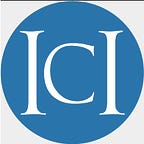Nearly 3.8 Million People Lost Medicaid Benefits on August 1: Here’s how you can get Medicaid Back
When the COVID-19 pandemic hit in 2020, the government made it easier for people to keep their Medicaid coverage and Children’s Health Insurance Program (CHIP) coverage. But now that the federal Public Health Emergency has ended, many people have lost Medicaid and CHIP coverage.
The KFF reports that nearly 3.8 million people have been disenrolled from Medicaid and CHIP as of August 1, 2023. This does not mean that 3.8 million people are ineligible for Medicaid and CHIP. In fact, many people are still eligible for Medicaid and CHIP, but lost coverage because they didn’t return forms, or they or the state made other mistakes.
What does that mean for me?
If you and/or your family are eligible for Medicaid and/or CHIP, this means that you will no longer be automatically enrolled in Medicaid and CHIP each month. You may have to take extra steps to get Medicaid and CHIP coverage back.
If you know or work with people who are eligible for Medicaid and CHIP, you can help by sharing this following information about how to get Medicaid and CHIP benefits back.
Here is what you need to know:
· First, you must update your contact information with your state Medicaid agency. Here is where you can find your state Medicaid agency.
· After you update your contact information, you will receive a Medicaid renewal form in the mail. Please respond to the form! You will lose coverage if you don’t respond to the form, even if you are eligible. Your children might be eligible for CHIP even if you are not eligible for Medicaid.
· If you are not eligible for Medicaid anymore, you can still get health care coverage through the Affordable Care Act (ACA) Marketplace or through your employer.
If you lost Medicaid coverage but you still need it, there are programs that can help you get it back.
Here are some resources that can help you get your Medicaid and CHIP coverage back:
· State protection and advocacy systems can help you get Medicaid coverage back if you are eligible.
· Disability Information and Access Line (DIAL) can help you if you have a disability and you need to get your Medicaid coverage back.
· The Eldercare Locator can help you if you are an older adult who has lost Medicaid coverage.
· Your State Health Insurance Assistance Program (SHIP) can provide one-on-one assistance, counseling, and education if you or your family members are older adults or people with disabilities who need Medicaid back and also receive Medicare.
· The Benefit Enrollment Centers can help you if you are no longer eligible for Medicaid, but still need other health insurance and benefits
I’m not sure if I receive Medicaid or CHIP. How can I find out?
Many states have different names for Medicaid and for other health insurance programs. For example, in Massachusetts, Medicaid is called MassHealth. In Ohio, Medicaid is called CareSource. In California, Medicaid is called Medi-Cal. Learn what Medicaid is called in your state by visiting your state Medicaid agency online.
Don’t receive Medicaid? Here are some ways you can help!
If you don’t receive Medicaid, please share this information widely with your community networks! If you work on a state level, please share information specific to your state.
You can also share materials from the Centers on Medicare & Medicaid Services (CMS). The CMS has a resource page on their website, Medicaid and CHIP Renewals Outreach and Educational Resources. This includes a Communications Toolkit in multiple languages of social media posts and messaging to share with your networks. Also, check out this fact sheet and share it in your community: Keeping People Covered As States Restart Routine Medicaid Renewals.
If you want to learn more information and details about this policy change, please read the Administration for Community Living announcement.
